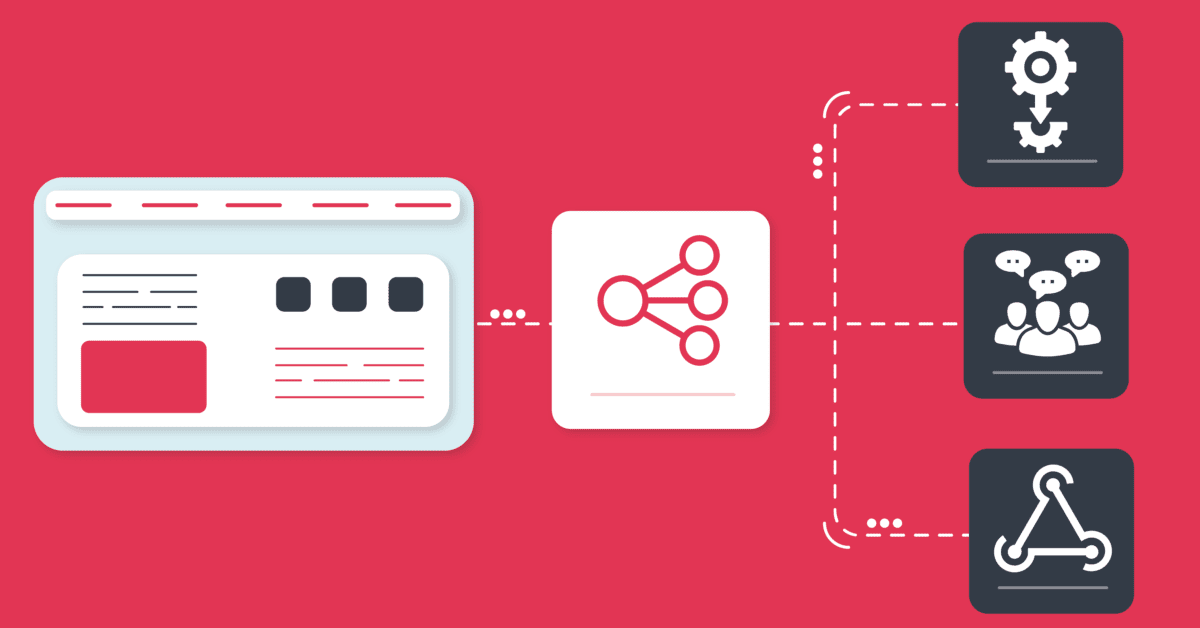
Updated on by Daniel Twigg
API integration platforms come in many shapes and sizes. Whether you are looking to consolidate data from enterprise silos. Automate key business processes or provide self-service integrations to your own SaaS platform users. There are some key functions that will assist you with your integration goals.
Integration platforms come in many forms: iPaaS (integration platform as a service), embedded iPaaS and iaaS (integration as a service). In our report An Introduction to iPaaS, Embedded iPaaS and Integration you can learn about each. As well as read some advice on choosing the appropriate platform based on your needs.
This blog focuses on three key features of an API integration platform – particularly for an embedded iPaaS platform.
Enabling Native Integration Deployment
You can either resolve your client integration needs yourself (‘natively’). Alternatively, you can hand them off to a third-party service provider/application that sits outside of your application. While many companies are happy for their users to interact with a third-party integration solution to self-solve their requirements. There are many advantages to being able to handle integrations natively inside your SaaS application.
Native integrations allow your SaaS platform to become more “sticky” with your users. By being the facilitator of automation you deliver direct value to your users, enhancing your SaaS’s functionality.
Native integrations enable your users to self-serve, all whilst in your app, browsing integration options through your own customised marketplace. Their problems are resolved at the point of need.
If you hand off your end-users to a third-party you absolve yourself of the majority of the responsibility. It is much more scalable, but it fractures your end-user relationship.
While it can sound like it will be incredibly developer intensive to build, deploy and maintain a wide array of native integrations. It really doesn’t have to be and this is where Embedded iPaaS solutions can help. They provide a range of tools to create and deploy integrations in a scalable manner. A hybrid of a third-party application, with the benefits this brings, but embedded into your application and, importantly, under your control.
Embedded iPaaS solutions such as Cyclr give you the ability to roll out a fully-fledged integration marketplace in your SaaS app. You can rapidly create, manage and deploy an ecosystem of integrations. As well as have full control of what goes into it, where you want them featured and which of your users can access them.
Enabling Integration Building by Wider Teams
Traditionally any updating or modification of existing integrations would have to be tackled by a developer. Modern integration platforms mean that is no longer the case. With tools that make building integrations as simple as connecting a few Lego bricks wider teams can even get involved in the building process.
Providing teams with low-code tools, such as drag-and-drop integration builders and a wide range of API connectors, empowers more teams in your organisation to get involved with integration tasks. So, if your help desk is getting floods of tickets requesting modifications, or entirely bespoke integrations, they can be actioned at source by support teams. API integration platforms rest on top of existing APIs – so there is no development required to roll out new integrations or amend existing ones.
They make use of existing features only. This speeds up response and delivery times by not having to fit integration requests into developer schedules and should improve customer satisfaction and responsiveness.
Want to learn more about Cyclr and Embedded iPaaS?
Get in touch and choose whether you want a demo, a free trial or just ask questions our team are ready and waiting to get your integration journey started!
Enabling Event-driven Integrations
The vast majority of integrations are built on top of APIs, luckily RESTful ones. As good as REST is, the problem can be when it comes to automatically get updates you have to request for data. So if you’re looking for records that have just been added to a service you have to continually request new data on a regular time interval (also known as Polling). If the driving actions are infrequent then, nine times out of ten, you may not receive anything back from these Polls, it may not be the best use of resources.
This is where event-driven integrations come in. Typically driven by Webhooks. An initial packet of data is sent to a custom URL only when a specific event has happened.
These initial Webhook triggers can be used to kick off much larger automation processes. This could be adding and updating data in multiple systems all based on the data in the initial Webhook record packet. This is great for providing timely, reactionary automation which works with individual records. It is also highly efficient for individual / low numbers of changes.
However, if you are looking to process larger recordsets at each integration run-time Polling is undoubtedly a more efficient method.